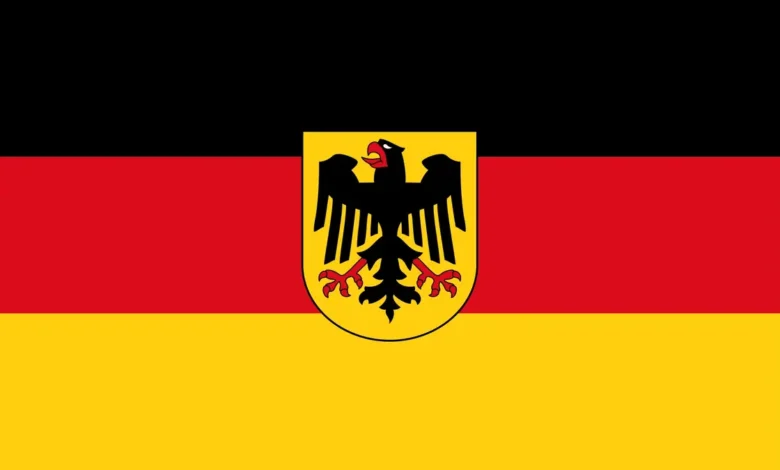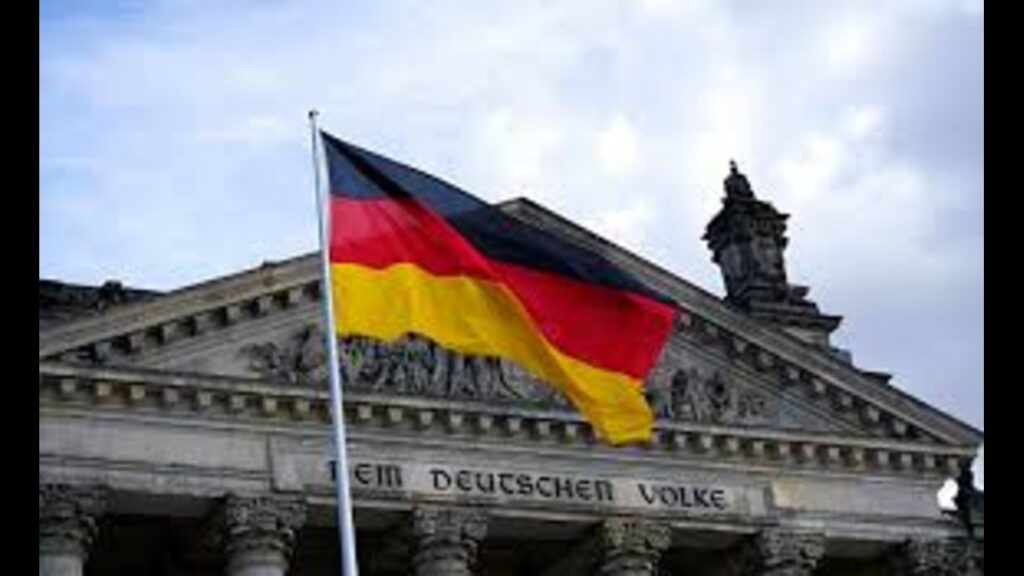The Rich History and Symbolism of the Germany Flag 1

Table of Contents
The Germany flag, an emblematic symbol of a nation’s identity, has a history as rich and varied as the country itself. This tricolor flag, composed of horizontal stripes of black, red, and gold, embodies the struggles, triumphs, and aspirations of the German people. In this article, we will delve into the history, symbolism, and cultural significance of the Germany flag, uncovering the layers of meaning behind this iconic banner.
The Evolution of the Germany Flag
The roots of the Germany flag can be traced back to the early 19th century. During the Napoleonic Wars, the black, red, and gold colors were adopted by the Lützow Free Corps, a volunteer unit of the Prussian army. These colors were chosen because they were readily available; the soldiers wore black uniforms with red facings and gold buttons. Over time, these colors came to symbolize resistance and unity among the German states.
The 1848 Revolutions
The Germany flag as we know it today was first adopted during the Revolutions of 1848. This period of political upheaval across Europe saw the emergence of nationalist movements striving for unification and democratic reform. The Frankfurt Parliament, convened in 1848 to draft a constitution for a unified Germany, chose the black, red, and gold tricolor as the national flag. This choice was a nod to the flag of the Lützow Free Corps and a symbol of the liberal and nationalistic aspirations of the time.
The German Empire
However, the triumph of conservative forces in the aftermath of the 1848 revolutions meant that the black, red, and gold flag was short-lived. When the German Empire was established in 1871 under Prussian leadership, a new flag was introduced. This flag featured black, white, and red horizontal stripes, reflecting the colors of the Prussian and Hanseatic flags. The black, white, and red tricolor became synonymous with the German Empire and its militaristic and imperial ambitions.
The Weimar Republic
The defeat of the German Empire in World War I and the abdication of the Kaiser led to the establishment of the Weimar Republic in 1919. The new democratic government sought to break with the imperial past and adopted the black, red, and gold tricolor once more. This flag symbolized the democratic and republican ideals of the Weimar Republic, as well as a return to the values of the 1848 revolutionaries.
Nazi Germany
The rise of the National Socialist German Workers’ Party (Nazi Party) in the 1930s brought a dark chapter in the history of the Germany flag. The Nazis abolished the Weimar Republic’s flag and introduced the swastika flag, a symbol of their totalitarian and genocidal regime. The black, red, and gold tricolor was banned, and its association with democracy and republicanism made it a target for persecution.
Post-World War II and Reunification
Following the defeat of Nazi Germany in 1945, the country was divided into East and West Germany. Each adopted its own flag: East Germany used a version of the black, red, and gold flag with the addition of the socialist emblem, while West Germany reverted to the plain black, red, and gold tricolor. With the fall of the Berlin Wall in 1989 and the subsequent reunification of Germany in 1990, the black, red, and gold flag was reaffirmed as the national flag of a unified Germany.
Symbolism and Meaning

The colors of the Germany flag—black, red, and gold—are imbued with deep historical and cultural significance. Each color carries its own meaning and collectively, they tell the story of the German nation.
Black
Black represents determination, strength, and resilience. Historically, it symbolizes the struggle for freedom and unity, as seen in the uniforms of the Lützow Free Corps. In the context of the German flag, black is a reminder of the country’s tumultuous past and the enduring spirit of its people.
Red
Red stands for bravery, courage, and sacrifice. It reflects the bloodshed in the fight for democracy and the countless lives lost in wars and revolutions. Red is also a symbol of the social and political movements that have shaped Germany’s history, from the 1848 revolutions to the modern democratic state.
Gold
Gold signifies prosperity, enlightenment, and hope for the future. It represents the wealth of cultural and intellectual contributions that Germany has made to the world. The golden stripe is a beacon of the nation’s aspirations for peace, democracy, and a better future for its citizens.
Cultural Significance
The Germany flag is more than just a national symbol; it is a unifying emblem for the German people. After decades of division and conflict, the flag represents the country’s reunification and the collective identity of its citizens. It is a symbol of national pride and unity, transcending regional and political differences.
International Symbol
Internationally, the Germany flag is recognized as a symbol of a country that has overcome immense challenges to become a leading global power. Germany’s commitment to democracy, human rights, and international cooperation is reflected in its national flag. The black, red, and gold tricolor is flown at international events, symbolizing Germany’s role on the world stage.
Cultural Celebrations
The Germany flag is prominently displayed during national holidays and cultural celebrations. On Unity Day (Tag der Deutschen Einheit), celebrated on October 3rd, the flag is flown across the country to commemorate the reunification of East and West Germany. It is also a common sight during sporting events, where it represents the country’s athletic prowess and national pride.
The Germany Flag in Modern Times
The design of the Germany flag is simple yet profound. The flag consists of three horizontal stripes of equal width, with black on top, red in the middle, and gold on the bottom. The proportion of the flag is 3:5, a common aspect ratio for national flags. The simplicity of the design ensures that the flag is easily recognizable and conveys a strong visual message.
When flown alongside other flags, the Germany flag follows specific protocols to maintain respect and dignity. It is always given a place of honor, especially during official events and international gatherings. The flag is also flown at half-mast during periods of national mourning, reflecting the somber mood of the country.
Controversies and Debates
Despite its symbolic significance, the Germany flag has been the subject of controversies and debates. Some argue that the flag’s colors are too closely associated with specific political movements, potentially alienating certain groups. Others believe that the flag should evolve to better reflect modern Germany’s diversity and multiculturalism.
There have also been discussions about the use of the flag in protest movements. In recent years, far-right groups have appropriated national symbols, including the Germany flag, to promote their ideologies. This has sparked debates about the appropriate use of the flag and the importance of safeguarding its meaning.
The Future of the Germany Flag
As Germany continues to evolve, so too will the significance of its national flag. The black, red, and gold tricolor will undoubtedly remain a powerful symbol of the country’s identity, resilience, and aspirations. As new generations of Germans embrace their heritage and look toward the future, the flag will continue to inspire and unite.
Conclusion
The Germany flag is a testament to the country’s rich history and the enduring spirit of its people. From its origins in the Napoleonic Wars to its role in modern Germany, the black, red, and gold tricolor has been a symbol of resistance, unity, and hope. As Germany moves forward, the flag will remain a proud emblem of the nation’s identity and aspirations, a reminder of the past and a beacon for the future.


